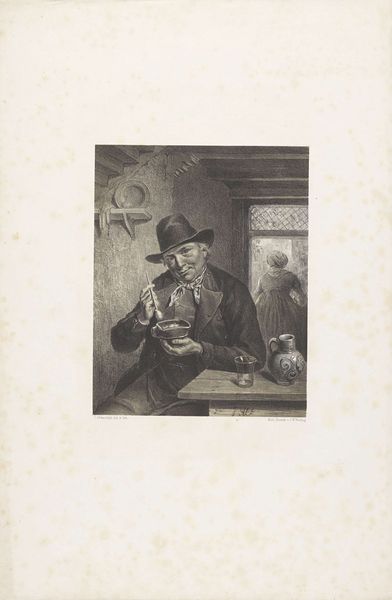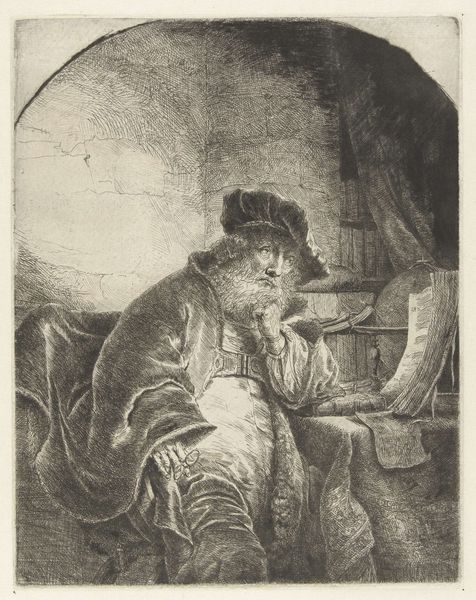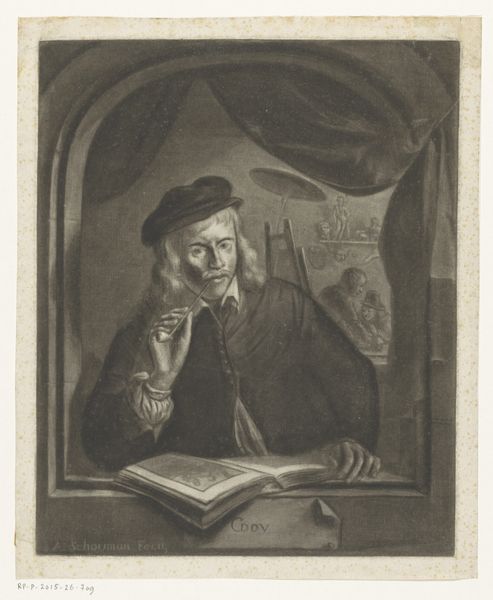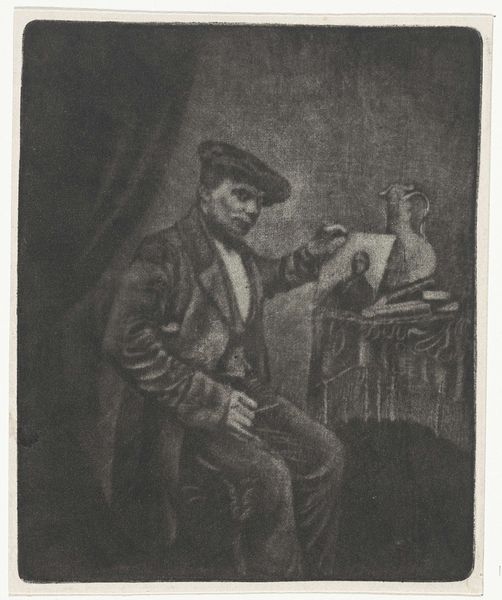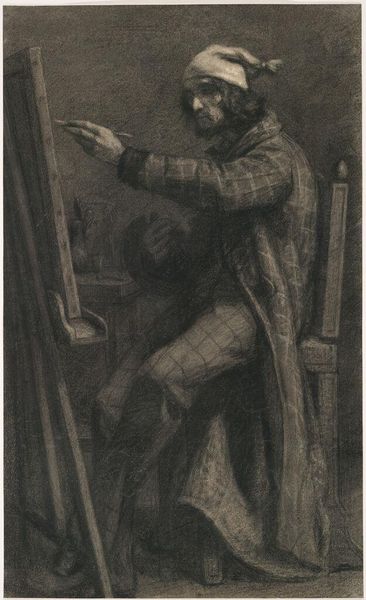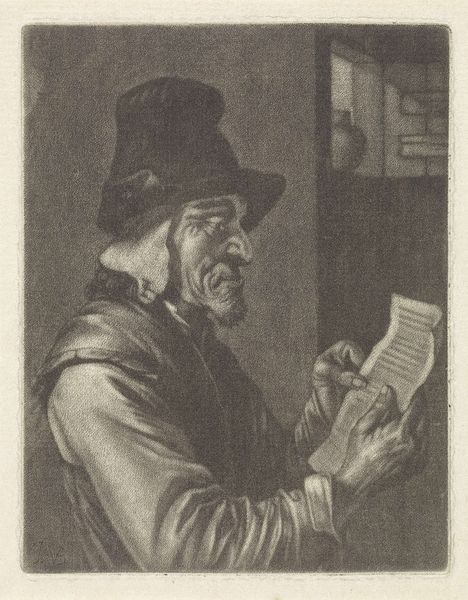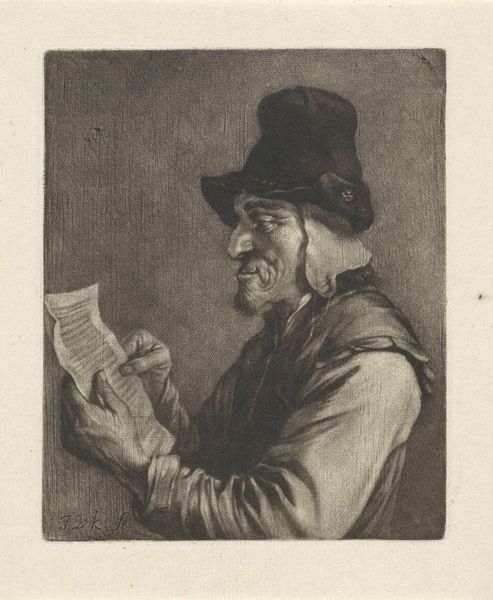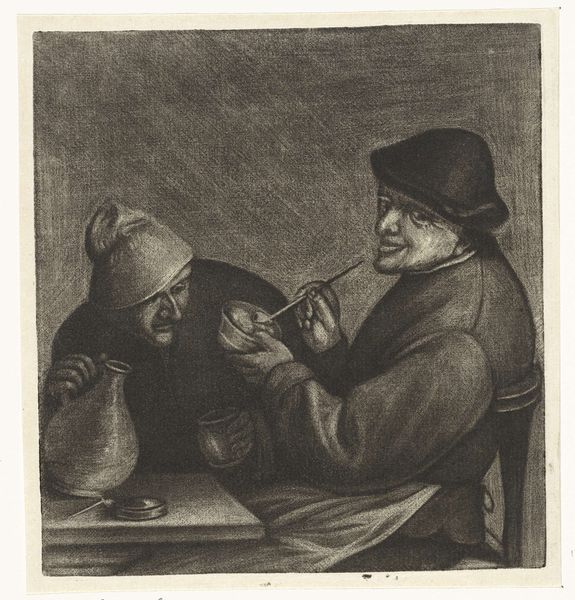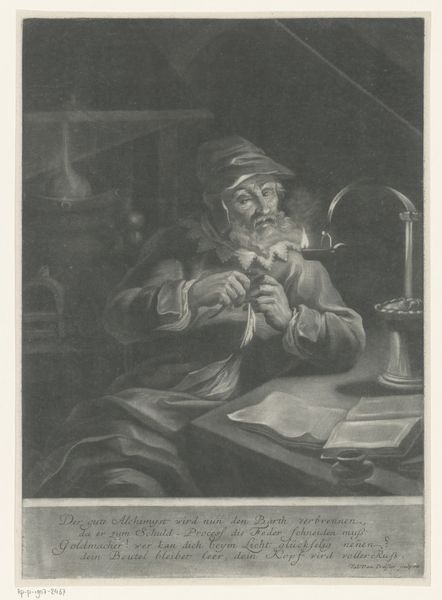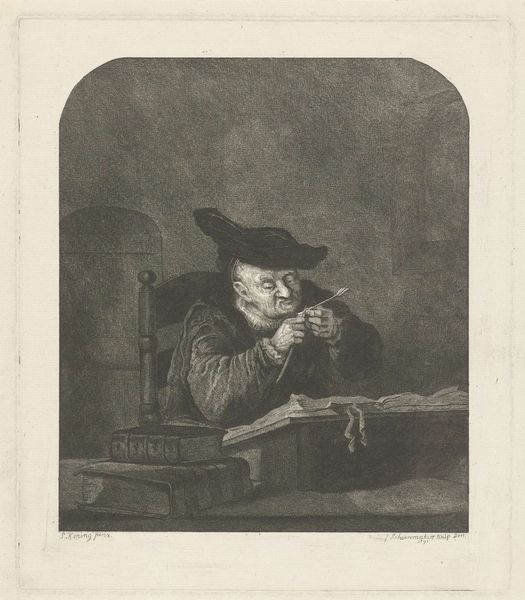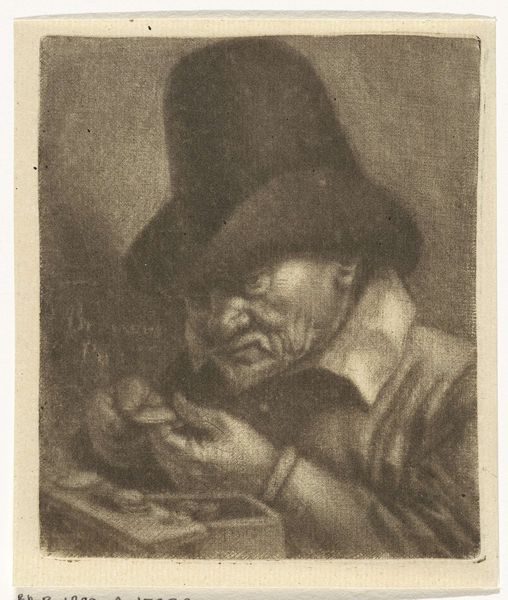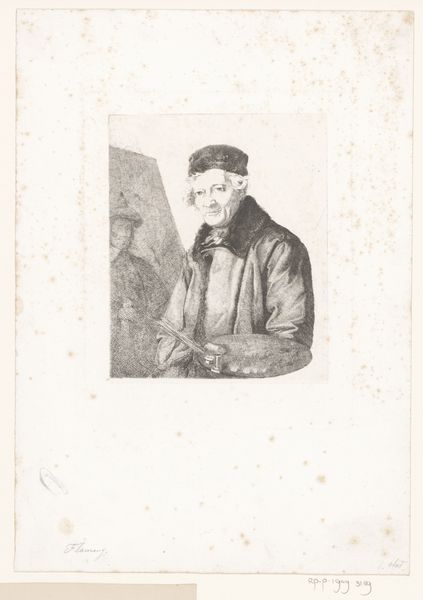
lithograph, print, etching
#
portrait
#
baroque
#
dutch-golden-age
#
lithograph
# print
#
etching
#
genre-painting
Dimensions: height 337 mm, width 257 mm
Copyright: Rijks Museum: Open Domain
Curator: Standing before us is "Piskijker," an etching, lithograph and print by Jan Stolker dating from the late 18th century, specifically sometime between 1734 and 1785. What's your immediate take? Editor: Intriguing! A quiet, contemplative mood hangs in the air, wouldn’t you say? It’s intimate, like peering into a private moment. The figure is holding up a vial... but it's dark and I want to laugh and cringe at what he could possibly be analyzing. Curator: Well, the term "piskijker" translates directly to "pee-gazer" in modern terms... But let’s place it within its historical context. During this period, uroscopy was a common diagnostic method. Physicians would analyze urine's color, clarity, and even its taste - yes, really! - to determine a patient’s health. Editor: Oh my god. Taste? Ok, yes that sets a completely different tone and understanding. Looking beyond that detail - beyond the slightly queasy-inducing imagery, there’s something quite scholarly in the surroundings isn't there? He is very serious in the process, though. Curator: Absolutely. Observe the detail Stolker includes – the books overflowing the shelves, suggesting a learned environment. The subject’s dress, with the dark robe and serious expression, reinforces the impression of someone deeply engaged in the pursuit of knowledge, however disgusting in current times! The artwork reflects Dutch Golden Age themes. Editor: But it’s not grand or heroic, is it? It’s domestic, focused on the individual in their element. It’s the drama in the everyday and very accessible. It makes me consider art as a social record and commentary in many ways, really. The details, like the papers visible in the bookshelves. Amazing! Curator: Precisely, it offers insights into the medical practices and societal views of the time. These prints were often created for a broader audience, to inform and amuse. Prints allowed artwork to travel far further at a lower cost than regular artworks. It served as an important cultural touchstone. Editor: And it does both admirably well. It informs and, despite myself, it amuses. Makes one appreciate the advancements in modern medicine! Curator: Indeed! It reminds us how much medical understanding has changed. Editor: Definitely food for thought... or, well, something to think about whilst ensuring you never need someone to perform the same procedures again!
Comments
No comments
Be the first to comment and join the conversation on the ultimate creative platform.
